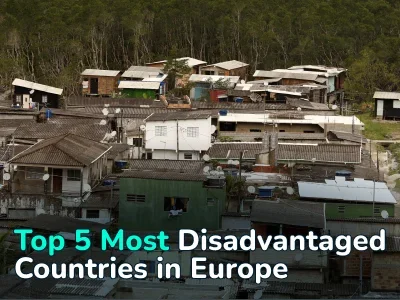
Countries with the highest and lowest interest rates. Current analysis
Did you know that there are not only real interest rates but also nominal rates? And that they can be both high and very low? Visual Capitalist has analyzed 40 of the world's largest economies on this subject. Taking their data as a basis, we tell you which world economies have the highest and which have the lowest interest rates.
What role do interest rates play in national economies? They play a crucial role because they can have a serious impact on people's ability to borrow, manage debt, and purchase more expensive goods, such as cars and real estate.
How is the real rate different from the nominal rate? The real interest rate is the same as the nominal rate but adjusted for inflation. That is, it reflects the actual cost of borrowing or lending. Real interest rates can change over time and depend on various factors, such as inflation, central bank monetary policy, and economic growth. They can also affect economic growth by influencing investment and consumption decisions.
The five countries with the highest interest rates are:
|
|
|
|
|
|
|
|
|
|
|
|
|
|
|
|
|
|
|
|
|
|
|
|
If a country has high-interest rates, what does that mean? In such countries, investors can expect higher returns on their investments, but at the same time, they should understand that such investments involve higher risks due to instability, both economic and political.
5 countries with the lowest interest rates:
|
|
|
|
|
|
|
|
|
|
|
|
|
|
|
|
|
|
|
|
|
|
|
|
Hyperinflation, which has been observed in Argentina in particular, is causing problems for the economy and the financial system of the country as a whole. The table shows that with a nominal interest rate of 78%, real interest rates in the country remain the lowest in the world.
What are the projections? The IMF suggests that the recent rapid rise in nominal interest rates in many countries may be temporary. According to the organization, central banks in advanced economies are likely to ease monetary policy and return interest rates to pre-pandemic levels when inflation is brought under control.
Author
I am responsible for editorial work. I write expert interviews and guides.























